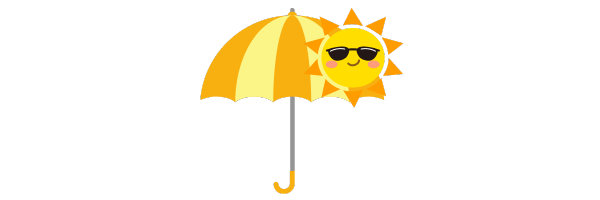Working in Extreme Heat
10 practical tips to stay cool on the job in the sweltering Canadian summer

1. Stay Hydrated
What to Do: Drink plenty of water throughout the day, even if you don’t feel thirsty. Aim for at least 8-10 glasses.
How it Helps: Staying hydrated helps regulate your body temperature and prevents heat-related illnesses such as heat exhaustion and heat stroke.

2. Wear Lightweight and Light-Colored Clothing
What to Do: Choose loose-fitting, breathable fabrics like cotton. Light colors reflect sunlight, helping to keep your body cool.
How it Helps: Lightweight and light-colored clothing allows better air circulation and reduces heat absorption, keeping your body cooler.

3. Take Regular Breaks
What to Do: Schedule regular breaks in a shaded or air-conditioned area. Try to take a break every hour or so, especially during peak heat periods.
How it Helps: Regular breaks allow your body to cool down and recover from exposure to high temperatures, reducing the risk of heat-related illnesses.

4. Use Fans and Air Conditioning
What to Do: Use fans to circulate air and keep windows open if possible. If you have access to air conditioning, use it to lower indoor temperatures.
How it Helps: Fans and air conditioning help lower the ambient temperature, reducing your body’s need to cool itself and preventing overheating.

5. Plan Work for Cooler Parts of the Day
What to Do: Schedule strenuous tasks for early morning or late evening when temperatures are cooler.
How it Helps: Working during cooler parts of the day minimizes heat exposure, reducing the risk of heat stress and maintaining productivity.

6. Use Cooling Towels and Ice Packs
What to Do: Apply damp cooling towels to your neck, wrists, and forehead. Keep ice packs handy for quick relief.
How it Helps: Cooling towels and ice packs help lower your body temperature quickly by drawing heat away from your skin, providing immediate relief from the heat.

7. Stay in the Shade
What to Do: Whenever possible, seek out shaded areas or create your own shade using umbrellas or portable canopies.
How it Helps: Shade reduces direct sun exposure, significantly lowering the risk of heat-related illnesses and sunburn.

8. Wear a Hat and Sunglasses
What to Do: Wear a wide-brimmed hat and UV-protective sunglasses to shield your face and eyes from direct sunlight.
How it Helps: A hat provides shade for your head and neck, while sunglasses protect your eyes from harmful UV rays, preventing heat exhaustion and sunburn.

9. Eat Light Meals
What to Do: Opt for light, smaller meals and avoid heavy, hot foods. Include more fruits and vegetables in your diet.
How it Helps: Light meals are easier to digest and generate less body heat. Fruits and vegetables also have high water content, helping to keep you hydrated.

10. Recognize Signs of Heat-Related Illnesses
What to Do: Learn to recognize symptoms of heat exhaustion and heat stroke, such as dizziness, nausea, excessive sweating, and confusion. Seek medical attention if needed.
How it Helps: Early recognition and prompt action can prevent severe health issues, ensuring your safety and well-being in hot conditions.




